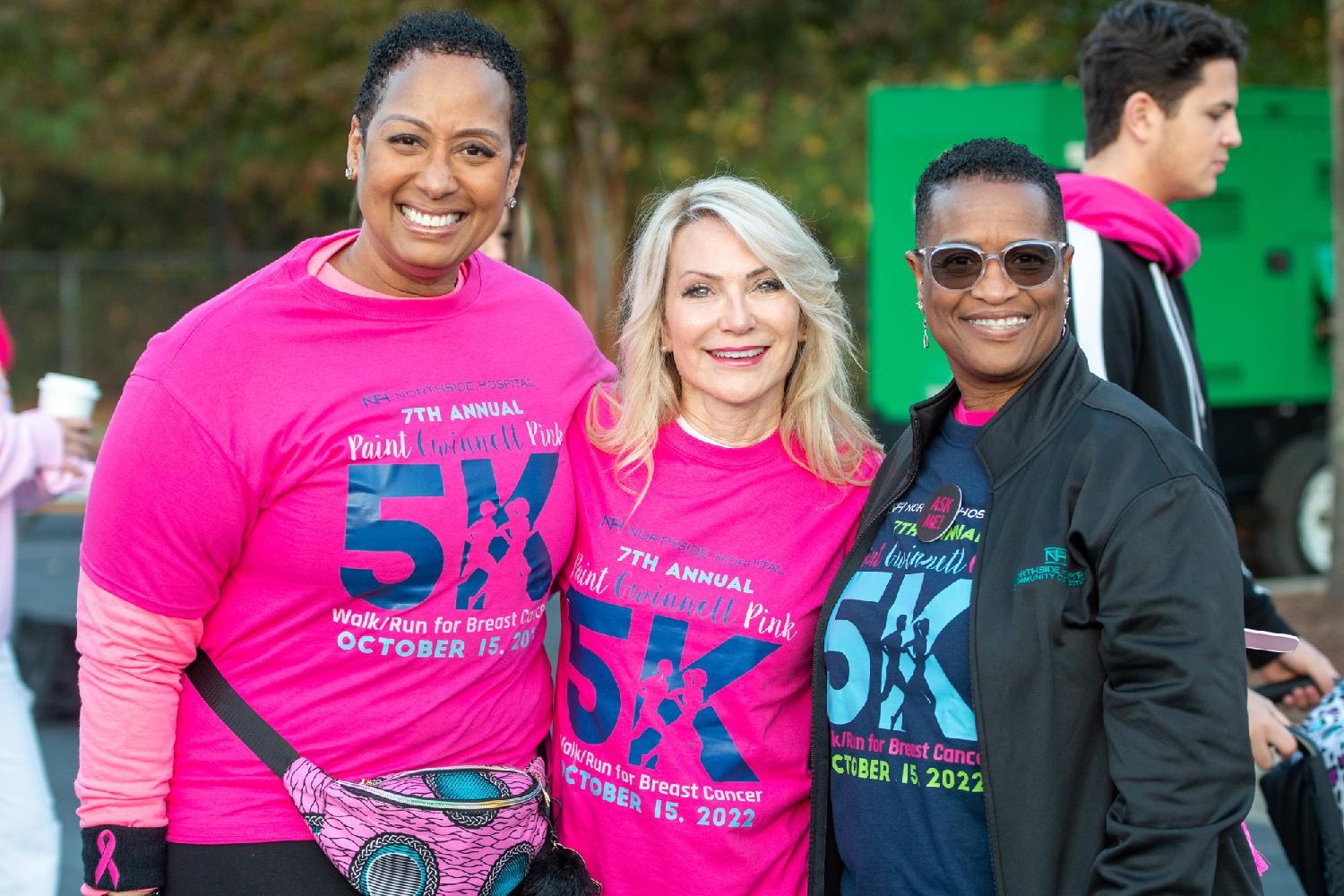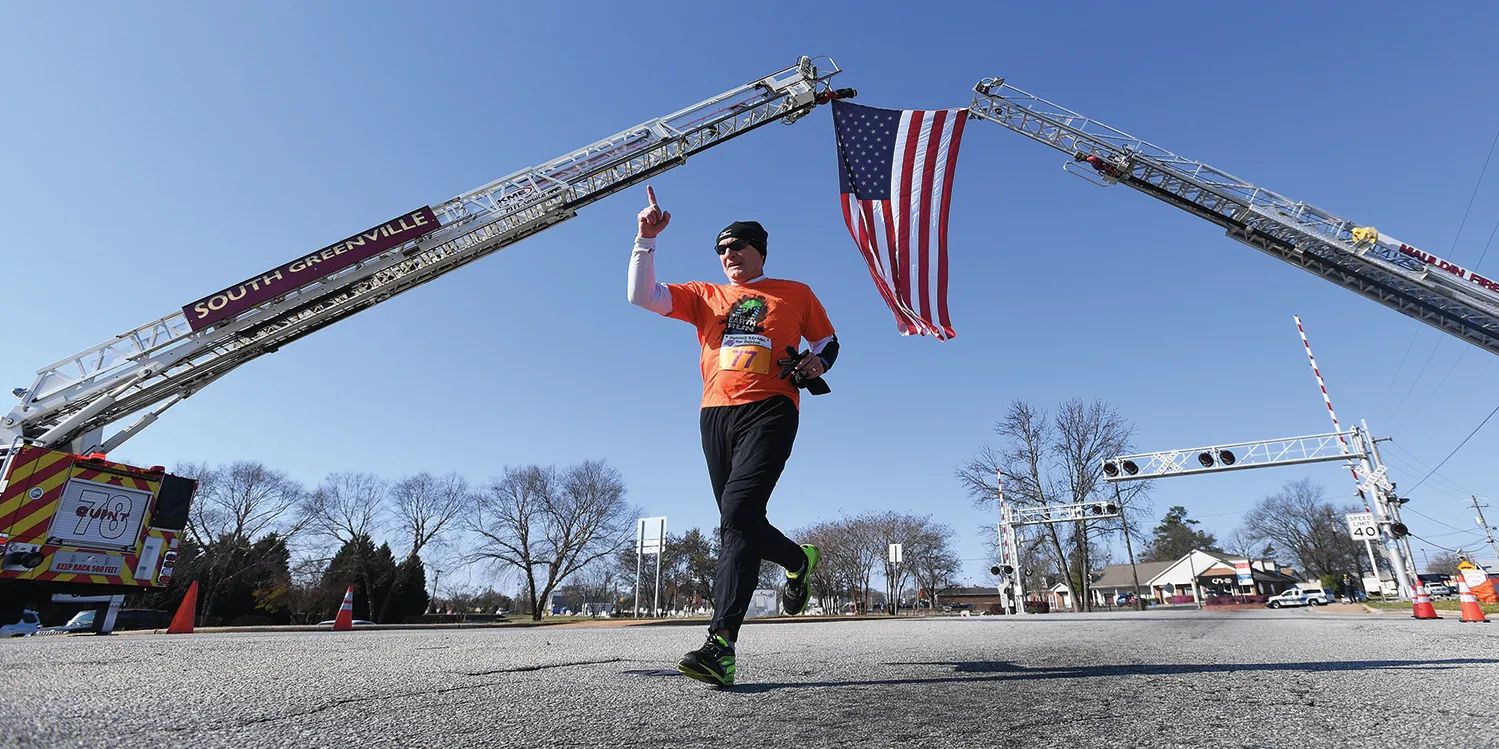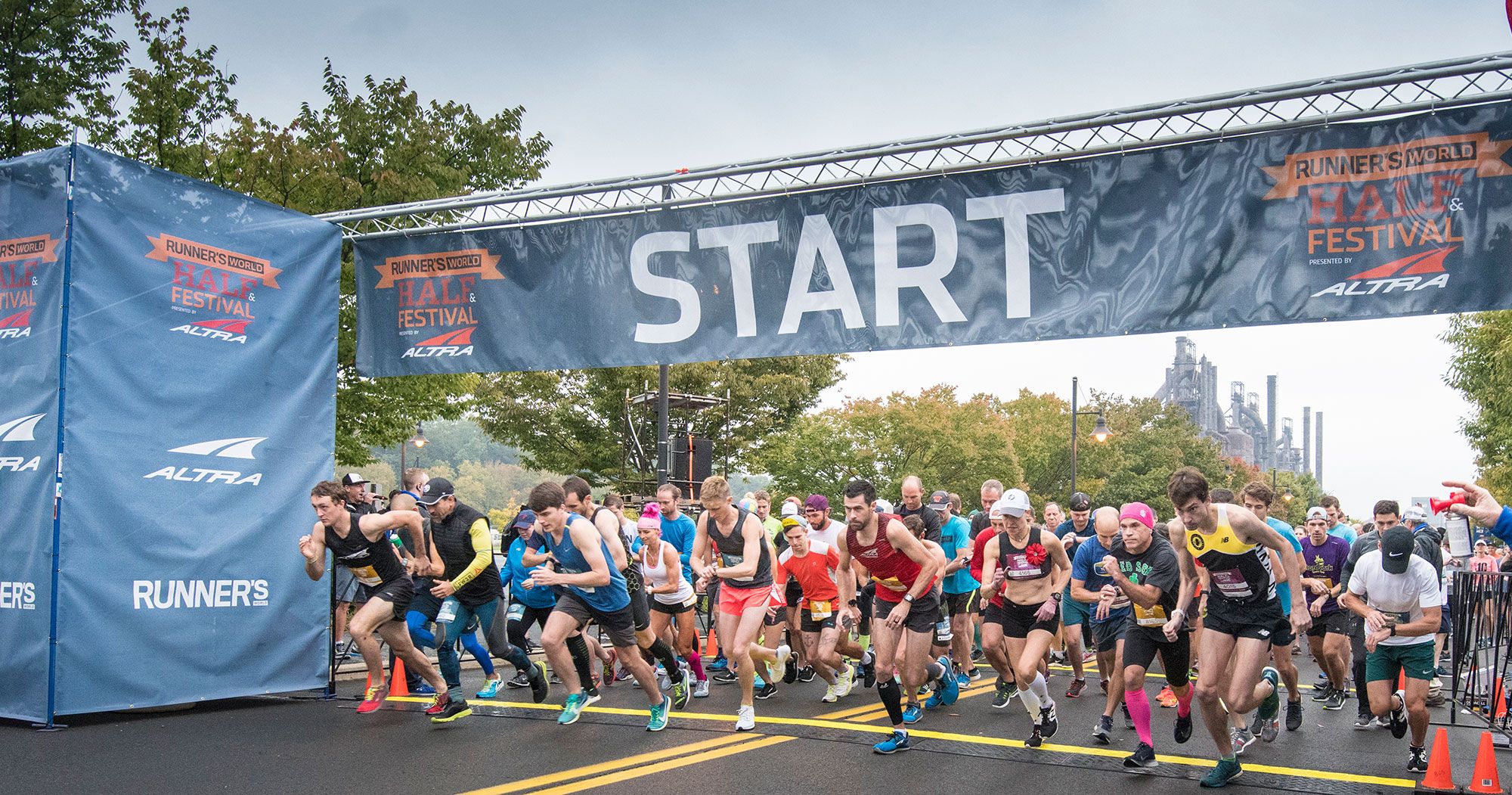

Featured
How Far Is A 5K Run
Modified: March 1, 2024
Discover how far a 5K run can take you, and get featured in this exciting and challenging event. Lace up your shoes and conquer this popular distance!
Introduction
Welcome to the world of 5K runs, where running enthusiasts, beginners, and fitness enthusiasts come together to challenge themselves and experience the thrill of crossing the finish line. Whether you’re a seasoned runner or just starting out on your running journey, a 5K run is an excellent way to test your endurance, enjoy the outdoors, and achieve personal fitness goals.
A 5K run, also known as a 5-kilometer run, is a popular race distance in the running community. It equates to approximately 3.1 miles, making it an achievable goal for many individuals, regardless of their fitness level. This distance strikes the perfect balance between being challenging enough to push your limits and being manageable for those new to running.
Throughout this article, we will explore the ins and outs of a 5K run, including its history, the benefits of participating in one, how to train effectively, tips for a successful run, and common mistakes to avoid. Whether you’re planning to participate in a local charity run or aiming for a personal achievement, this comprehensive guide will provide you with all the information you need to cross that 5K finish line with confidence.
Running a 5K run is not just about the physical challenge; it’s also a mental and emotional test. It requires determination, discipline, and the willingness to push through any obstacles that come your way. The sense of accomplishment and pride that comes with completing a 5K run is indescribable, and it can be a powerful motivator to continue pursuing your fitness goals and embracing an active lifestyle.
So, whether you’re lacing up your running shoes for the first time or looking to improve your personal record, get ready to embark on an exciting journey as we delve into the world of 5K runs. Let’s explore every aspect of this exhilarating race distance and discover how far you can push yourself!
What is a 5K Run?
A 5K run is a popular and accessible race distance in the running world. The term “5K” stands for 5 kilometers, which is equivalent to approximately 3.1 miles. This distance has become a standard measurement for many races and is widely recognized by runners of all levels of experience.
One of the key reasons behind the popularity of the 5K distance is its versatility. It is an ideal race for beginners who are just starting their running journey, as well as seasoned runners who want to challenge their speed and endurance capabilities. It strikes a good balance between being achievable for beginners and providing a challenge for more experienced runners.
The 5K distance is often utilized for charity runs, community events, and fun runs. These races attract a wide range of participants, including families, friends, and individuals looking to support a cause or simply enjoy the camaraderie and celebration of running. The inclusive nature of the 5K run allows people of different fitness levels and abilities to participate and enjoy the experience.
Unlike longer distances like marathons or half marathons, a 5K run can be completed without extensive training. That being said, it still requires dedication, commitment, and a focused training plan to maximize performance and enjoyment on race day.
The 5K race experience extends beyond the actual running distance. Often, these events feature a festive atmosphere with music, cheering spectators, and post-race celebrations. Many races also provide participants with race t-shirts, medals, and the opportunity to connect with like-minded individuals who share a passion for running.
Whether you’re aiming to beat a personal record, raise money for a cause, or simply experience the thrill of crossing the finish line, a 5K run offers a fulfilling and rewarding experience. It’s a chance to challenge yourself, improve your fitness, and create lasting memories.
Now that we have a clear understanding of what a 5K run is, let’s dive deeper into its history and explore how it has become an integral part of the running culture worldwide.
History of the 5K Run
The history of the 5K run dates back several decades, and its roots can be traced to the growth of road racing as a popular sport. Over time, this race distance has gained immense popularity and has become one of the most common and accessible forms of competitive running.
The origins of the 5K run can be traced back to the running boom of the 1970s when fitness enthusiasts began to embrace running as a way to improve their health and overall well-being. During this time, running races of various distances started to gain traction, and the 5K distance quickly emerged as a favorite among participants.
The 5K distance gained particular prominence in the running community due to its appeal to both beginners and seasoned runners. Beginners found it achievable as an initial goal, while more experienced runners viewed it as an opportunity to push their limits and test their speed.
As the popularity of the 5K run grew, so did the number of organized races. Local communities, charities, and running clubs often organized 5K races as a way to promote health and fitness initiatives, raise funds, or bring the community together in a fun and active way.
The 5K distance also started to make its way into larger-scale events. Many road races, such as the iconic Boston Marathon, decided to include a 5K race as part of their event lineup to attract a wider audience and provide more opportunities for people to participate in the festivities.
Over time, the 5K run became an inclusive and accessible race distance that appealed to people from all walks of life. Its shorter distance and relatively manageable training requirements made it an attractive option for beginners, while competitive runners embraced it as a chance to push their limits in a shorter and faster race.
Today, the 5K run has solidified its place in the running world as a staple distance. It continues to attract a diverse range of participants, from serious athletes to casual runners, and serves as a foundation for many runners to progress to longer distances or set new goals in their running journey.
As we move forward, let’s explore the benefits of participating in a 5K run and discover why it has become such a popular choice among fitness enthusiasts and running enthusiasts alike.
Benefits of Running a 5K
Participating in a 5K run offers a multitude of benefits that extend beyond just the physical aspects of running. Whether you’re a seasoned runner or just starting out on your fitness journey, here are some of the key advantages of running a 5K:
1. Improved cardiovascular health: Running a 5K is a cardiovascular exercise that gets your heart pumping and strengthens your cardiovascular system. Regular participation in 5K runs can improve your heart health, lower blood pressure, and reduce the risk of cardiovascular diseases.
2. Increased endurance and stamina: Training for and completing a 5K run helps build endurance and stamina. As you gradually increase your running distance and intensity, your body adapts to the demands of the race, allowing you to run longer and faster over time.
3. Weight management: Running a 5K is an effective way to burn calories and manage weight. The combination of cardiovascular exercise and calorie expenditure helps maintain a healthy body weight or achieve weight loss goals.
4. Stress relief: Running, including participating in a 5K run, has been shown to have numerous mental health benefits. It helps reduce stress levels, improves mood, and promotes a sense of well-being. The endorphins released during exercise can leave you feeling energized and more mentally resilient.
5. Sense of accomplishment: Crossing the finish line after completing a 5K run is an incredible feeling of achievement. It boosts self-confidence, provides a sense of accomplishment, and demonstrates that with determination and perseverance, you can reach your goals.
6. Social connections: 5K runs are often community-focused events that bring people together. They provide an opportunity to meet like-minded individuals, form connections, and build a supportive network. The camaraderie and encouragement from fellow participants can be highly motivating and enjoyable.
7. Goal setting and motivation: Training for a 5K gives you a tangible goal to work towards. Setting targets, following a structured training plan, and tracking your progress helps maintain motivation and drive. Completing a 5K run can inspire you to set new goals and continue challenging yourself.
8. Enjoyment of the outdoors: Running a 5K allows you to explore different routes and enjoy the beauty of nature. It provides a break from the confines of indoor workouts and allows you to soak in fresh air, sunlight, and the sights and sounds of your surroundings.
9. Long-term health benefits: Regular participation in 5K runs can lead to long-term health benefits, including reducing the risk of chronic diseases such as diabetes, stroke, and certain types of cancer. It strengthens your immune system, improves bone health, and promotes overall longevity.
These are just a few of the many benefits of running a 5K. Whether you’re motivated by the physical improvements, the sense of accomplishment, or the social aspect, participating in a 5K can have a positive impact on your physical and mental well-being.
Now that we understand the benefits, let’s dive into how to effectively train for a 5K run to ensure you perform your best on race day.
How to Train for a 5K Run
Training for a 5K run requires a structured plan that gradually builds your running endurance and prepares your body for the race distance. Whether you’re a beginner or looking to improve your performance, here are some key steps to follow:
1. Set a realistic goal: Determine your goal for the race, whether it’s completing the distance, achieving a specific time, or simply enjoying the experience. Setting a clear objective will help guide your training and keep you motivated.
2. Start with a base level of fitness: Before diving into specific training, it’s essential to have a basic level of fitness. If you’re new to running, start with a combination of walking and jogging to build your endurance gradually.
3. Establish a training schedule: Create a schedule that outlines your weekly training routine, including specific running days and rest days. Consistency is key, so aim for at least three to four training sessions per week.
4. Gradually increase mileage: Begin with shorter runs and slowly increase your mileage each week. Focus on building endurance rather than speed in the initial stages of training. Incorporate a mix of easy runs, tempo runs, and long runs to improve both your aerobic and anaerobic fitness.
5. Incorporate cross-training: Supplement your running routine with cross-training exercises such as cycling, swimming, or strength training. These activities help improve overall fitness, prevent injury, and balance your training program.
6. Pay attention to rest and recovery: Rest days are crucial for allowing your body to recover and adapt to the stress of training. Listen to your body and take rest days whenever needed. Incorporate stretching, foam rolling, and other recovery techniques into your routine to prevent injuries.
7. Practice proper running form: Focus on maintaining good running form to improve efficiency and reduce the risk of injury. Keep your posture upright, relax your shoulders, and land on your midfoot, not your heel. Avoid overstriding and maintain a cadence of around 180 steps per minute.
8. Include speed workouts: As you progress in your training, incorporate speed workouts like interval training and hill repeats to improve your speed and running economy. These workouts challenge your body to adapt to different pace variations.
9. Stay hydrated and nourished: Maintain proper hydration and fueling throughout your training. Drink water regularly and consider consuming a balanced diet that includes carbohydrates for energy, protein for muscle repair, and healthy fats for overall well-being.
10. Practice race-day simulation: As your race day approaches, incorporate simulation runs to familiarize yourself with the demands of the race. Practice running at your goal race pace and experiment with nutrition and hydration strategies to find what works best for you.
Remember, every individual’s training needs are unique, so it’s essential to adapt these guidelines to suit your fitness level and personal goals. Gradually progress your training, listen to your body, and make adjustments as necessary.
Now that you’re equipped with the knowledge to train effectively, let’s explore some tips to help you have a successful 5K run.
Tips for Running a 5K
Running a 5K is an exciting and rewarding experience. Whether it’s your first race or you’re aiming for a personal best, here are some valuable tips to help you have a successful and enjoyable 5K run:
1. Set a realistic pace: Start the race at a comfortable pace that you can maintain throughout the distance. It’s better to start a bit conservatively and gradually increase your speed if you have the energy, rather than starting too fast and burning out early.
2. Warm up properly: Prior to the race, warm up your muscles with light jogging, dynamic stretches, and strides. This helps prepare your body for the exertion and reduces the risk of injury. Allow yourself enough time for a proper warm-up routine.
3. Pace yourself: Be mindful of your pace throughout the race. It’s important to find a sustainable rhythm and avoid going out too fast. Split the race into sections, and make small goals to maintain a steady pace and gradually pick up speed if desired.
4. Practice proper breathing: Focus on maintaining a relaxed and steady breathing pattern. Take deep breaths, inhaling through your nose and exhaling through your mouth. This helps deliver oxygen to your muscles and keeps you relaxed during the race.
5. Stay mentally focused: Running a 5K requires mental endurance as much as physical stamina. Stay focused on your technique, maintain a positive mindset, and use mental strategies like visualization or repeating positive affirmations to stay motivated and overcome any obstacles.
6. Hydrate adequately: Drink water or sports drinks before and during the race to stay hydrated. It’s important to find a balance between sipping water at hydration stations and avoiding drinking too much to prevent discomfort. Practice your hydration strategy during training runs to find what works best for you.
7. Dress appropriately: Wear comfortable, moisture-wicking clothing that suits the weather conditions on race day. Choose proper running shoes that have been broken in to avoid discomfort and potential blisters. Consider wearing a hat or sunglasses if it’s sunny, and apply sunscreen to protect your skin from harmful UV rays.
8. Embrace positive self-talk: During the race, keep a positive mindset and encourage yourself through positive self-talk. Remind yourself of your training, your capabilities, and your goals. Celebrate small victories along the way, and remember that finishing the race is a success in itself.
9. Utilize crowd support: Take advantage of the energy and support from spectators along the race route. Their cheers and encouragement can provide a significant boost, especially during challenging moments. Smile, acknowledge their support, and let it motivate you to keep going.
10. Enjoy the experience: Running a 5K is not only about the finish line; it’s about enjoying the journey. Take in the sights and sounds of the race route, appreciate the camaraderie among fellow runners, and savor the sense of accomplishment as you cross the finish line.
Remember, every race is a learning experience. Use each 5K run as an opportunity to grow as a runner, set new goals, and challenge yourself. Apply these tips to your training and race strategy, and most importantly, have fun and enjoy the experience!
Now, let’s move on to discussing some common mistakes you should avoid when running a 5K.
Common Mistakes to Avoid in a 5K Run
Running a 5K can be an exhilarating experience, but it’s important to avoid some common mistakes that can hinder your performance or lead to injuries. Here are some key pitfalls to watch out for:
1. Starting too fast: One of the most common mistakes is going out too fast at the beginning of the race. It’s easy to get caught up in the excitement, but starting at a pace that you can’t sustain can lead to burnout and a drop in performance later on. Pace yourself and save your energy for the entire distance.
2. Neglecting a proper warm-up: Failing to warm up adequately before a 5K run can increase your risk of injury. A dynamic warm-up routine that includes light jogging, dynamic stretches, and strides helps prepare your muscles and joints for the demands of the race. Don’t skip this crucial step.
3. Ignoring proper hydration: Dehydration can greatly impact your performance and general well-being during a 5K run. Avoid neglecting hydration both before and during the race. Drink water or sports drinks, based on your preference, to maintain optimal fluid balance. Practice your hydration strategy during training runs to find what works best for you.
4. Poor pacing strategy: Failing to plan and execute a proper pacing strategy is a common mistake. It can lead to starting too fast, hitting a wall, or not reaching your desired time goal. It’s important to know your target pace and stick to it throughout the race, making adjustments as necessary.
5. Overlooking strength training: Building strength outside of running is essential for injury prevention and overall performance improvement. Neglecting strength training exercises can lead to muscular imbalances and decreased running efficiency. Include strength training exercises that target your core, legs, and upper body in your training routine.
6. Skipping rest and recovery: Rest days are just as important as training days. Failing to incorporate enough rest and recovery into your training schedule can increase the risk of overuse injuries and hamper your performance. Listen to your body, take regular rest days, and prioritize sleep to allow your body to repair and recharge.
7. Inadequate race day preparation: Don’t underestimate the importance of preparing for race day. Familiarize yourself with the race route, know where water stations are located, and consider practicing your nutrition and hydration strategies during training. Plan your logistics, such as transportation and parking, to ensure a stress-free race day experience.
8. Poor running form: Running with incorrect form can lead to inefficient movement, increased fatigue, and potential injuries. Focus on maintaining proper posture, landing midfoot, and engaging your core muscles. Consider getting a gait analysis, particularly if you’re experiencing discomfort or pain while running.
9. Neglecting mental preparation: Running a 5K requires mental resilience and focus. Arrive at the race with a positive mindset, visualize your race success, and use positive self-talk to motivate yourself during challenging moments. Develop mental strategies that work for you to stay mentally strong throughout the race.
10. Comparing yourself to others: Lastly, avoid getting caught up in comparing your performance to that of others. Each runner has their own journey, abilities, and goals. Focus on your own progress and celebrate your achievements rather than comparing yourself to others.
Avoiding these common mistakes can greatly enhance your 5K running experience. Learn from each race, continuously work on improving, and most importantly, enjoy the process of pushing your limits and achieving your goals.
Now that we’ve covered some common mistakes, let’s discuss how to accurately measure the distance of a 5K run.
How to Measure the Distance of a 5K Run
Accurately measuring the distance of a 5K run is crucial for tracking your progress and ensuring that you’re running the intended distance. While many organized races have certified courses, it’s also helpful to know how to measure the distance on your own. Here are the primary methods for measuring a 5K run:
1. GPS Devices: GPS watches or smartphone apps equipped with GPS technology are widely used for measuring running distances. These devices use satellites to track your movements, calculating the distance you have covered. While accurate, factors like tall buildings or challenging terrain can sometimes affect the accuracy of the measurement.
2. Online Mapping Tools: There are various online mapping tools available that allow you to plot your running route and determine the distance. Websites like MapMyRun, Strava, and Google Maps have user-friendly interfaces that let you map out your route and provide an estimated distance based on the route you create.
3. Running Track: If you have access to a running track, it can be an easy and reliable way to measure a 5K run. Most tracks are 400 meters per lap, so running approximately 12 and a half laps around the track will give you a distance close to 5 kilometers. However, keep in mind that running on a track can be monotonous and may lack the variety and challenges of running on different terrains.
4. Landmarks and Land Survey Tools: Another method is to use landmarks and land survey tools to measure the distance manually. You can use a measuring wheel, measuring tape, or even a GPS watch to measure the distance while taking into account factors like elevation changes and turns along your route.
5. Established Routes: Many cities and running communities have established routes for common distances, including 5Ks. These routes are often well-marked or have signs indicating the distance. Utilizing these established routes takes the guesswork out of measuring the distance and allows you to focus on your run.
When measuring a 5K on your own, it’s important to note that slight variations in measurement are normal due to factors such as small deviations in route planning and accuracy of devices or tools used. However, using reliable methods and tools will help ensure that you’re running very close to the intended distance.
Remember, the most important aspect of running a 5K is the effort and determination you put into it, rather than achieving an exact distance. Focus on your personal progress and enjoy the journey as you work towards crossing that 5K finish line.
Now that we’ve covered distance measurement, let’s summarize everything we’ve discussed about running a 5K and its benefits.
Conclusion
Running a 5K can be a transformative experience that instills a sense of accomplishment, improves fitness, and fosters a love for running. Whether you’re a beginner or a seasoned runner, the 5K distance offers a challenge that is both attainable and exhilarating.
In this comprehensive guide, we explored what a 5K run entails, delving into its history, benefits, and how to train effectively. We discussed important tips to help you have a successful race and avoid common mistakes that can hinder your performance. We also covered methods for accurately measuring the distance of a 5K run.
Participating in a 5K run provides a multitude of benefits, including improved cardiovascular health, increased endurance, weight management, stress relief, and a sense of accomplishment. It also allows you to connect with like-minded individuals, experience the joy of completing a race, and enjoy the beauty of nature as you explore different running routes.
Remember, every 5K run is a unique opportunity to challenge yourself, set new goals, and embrace an active lifestyle. Follow a structured training plan, pace yourself, avoid common mistakes, and listen to your body throughout the process. Celebrate each milestone and enjoy the journey as you progress along your running path.
So, whether you’re preparing for your first 5K race or looking to improve your personal record, lace up your running shoes, embrace the challenge, and discover just how far you can go in a 5K run.
Now, it’s time to embark on your running journey. Get out there, push your limits, and let the thrill of running a 5K propel you towards new heights!








